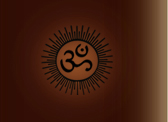Ayurveda has eight parts called as "Ashtangas"
in Sanskrit.
("Ashta" means eight; "anga" means part).
These eight parts of Ayurveda deal with different subjects.
They are as follows:
|
 Kaya
chikitsa: Kaya
chikitsa: |
Internal and external treatments for the
body. |
 Bala
chikitsa: Bala
chikitsa: |
Diseases related to infants. |
 Graha
chikitsa: Graha
chikitsa: |
Healing of psychological problems. |
 Urdvanga
chikitsa: Urdvanga
chikitsa: |
Treatments related to the head region. |
 Salya
chikitsa: Salya
chikitsa: |
Surgeries and operations. |
 Visha
chikitsa: Visha
chikitsa: |
The science of detoxification. |
 Rasayana
prakarana: Rasayana
prakarana: |
Methods to rejuvenate the saptadhatus. |
 Vajeekarana: Vajeekarana: |
Science of aphrodisiacs. |
1. Kaya chikitsa:
"Kaya" means body, "chikitsa" means
treatment. In Kayachikitsa, treatment is given to the body,
both externally and internally. Kayachikitsa can be done by
Panchakarma (which means "five methods").
These methods are: Vaman, Virechan, Basti, Nasy and Rakta
moksha.
Pachakarma includes three phases: Poorva karma, Pradhan Karma,
Pashchat Karma. Along with this Panchakarma some other procedures
like Shirodahra, Shirobasti, Katibhsati and Sarwangdhara can
be used to heal the whole body.
In Kayachikitsa, the detection of disease includes the following
basic principles according to Sootra sthana ("Sootra"
means principles, "sthana" means part. Sootra sthana
means "part with principles of Ayurveda"):
- Nadi sodhana [testing of nadi]
- Functionality of organs
- Vata, Pitta and Kapha doshas
- Intensity of the disease and strength of the patient
- Disease and its symptoms
Then the disease can be cured by selecting a proper medicine.
That medicine may come from any of the following and also
as combination:
- Oshadi [herbs]
- Rasa [mercury etc]
- Uparasa [includes bone, hair etc]
- Kara [potassium nitras etc]
- Sara [ammonium chloride]
- Stavara [poisons]
- Jangama [poisons]
- Pashana [arsenic compounds]
- Loha [metals]
Kayachikitsa also includes Kayakalpa, which means rejuvenation
of body. |
 |
2. Bala chikitsa
[Pediatrics]:
It contains "Balaroga prakarana" which means the
description about diseases of infants. This part of Ayurveda
includes diseases related to infants like "Grahani"
[motions], Vantibedhi [vomiting], Jvara [fevers], Graha chikitsa
[psychological imbalances].
In this part, there are so many methods of fumigations [dhoopa
chikitsa] to cure viral infections. Curing of these viral
infections is called as Bhoota chikitsa.
|
 |
3. Graha
chikitsa [Psychiatry / Bhutavidya]:
This part of Ayurveda includes healing of psychological
problems. The healing of psychological imbalances can be cured
by different methods. They are as follows:
- Dhoopa chikitsa [Fumigation]
- Mantra [by chanting some sacred syllables]
- Tantra [Using specific herbs]
- Yantra [Sacred symbols]
The description about the herbs for this treatment was given
in "GrahaVidya dravya".
|
 |
4. Urdvanga
chikitsa [Shalakya tantra / Salakhaya]:
This part of Ayurveda includes treatment of head [neck,
eye, nose, and teeth]. The disease related to those upper
parts can be detected by following the principles of "Sootra
sthana".
|
 |
5. Salya
chikitsa [Surgery]:
"Susruta" is the father of Surgery. He was the
first surgeon who did an eye operation successfully. He used
surgical instruments made up of stone and wood. Usage of his
instruments is still obscure for modern surgeons. This salya
chikitsa includes operation of tumors, bone fractures, internal
obstructions, removing foreign substances from body. It may
also include operations that ease the delivery in critical
conditions.
|
 |
6. Visha
chikitsa [Science of Detoxification]:
This part of Ayurveda includes detoxification methods. It
is also called as "Agada tantra". The accumulation
of poisons and toxins takes place in the body due to:
- Secretions of bacteria, fungi, viruses
- Junk food
- Bites of insects and snakes
- Bad habits like smoking and consumption of alcohol
|
 |
7. Rasayana
prakarana [Jara chikitsa]:
This part includes different methods to rejuvenate the saptadhatus
[seven constituent elements] of the body and to increase ojas.
In this part "Kuti pravesa" is a method which is
useful for preventing the symptoms of old age.
Better sex, long life can be attained through this part of
Ayurveda.
|
 |
8. Vajeekarana
[Science of Aphrodisiacs]:
"Vajee" means Horse, "Karanam" means
to follow. Vajeekarana means a combination of herbs which
gives the sexual capability that is equal to that one of a
horse. It develops "Sukra dhatu". This part also
cures problems like impotency and infertility to some extent.
These medicines also develop and strengthen Saptadhatus.
|
 |
